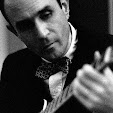
In a series of recent conversations with a friend, I found myself describing the Continental Look to him but lacking a distinct sense of its history and origin. Sure, I knew that it's popularity rivaled the Ivy League look here in the United States by the early 1960s and in many ways had as much stylistic influence on the next few years as the English look (both of which would briefly eclipse Ivy by 1966 or so) - but apart from hunches and suspicions that was about it.
 So, where to start? Well, what most of us know as Continental Style is also known as Italian Style due to its origins in Italy. Narrow lapels, a slightly pronounced shoulder, 2-buttons, and a shorter slim silhouette both in the jacket and trousers. But where did this style get its start? A good argument can be made that it all starts with Brioni Roman Style. Opened by tailor Nazareno Fonticoli and businessman Gaetano Savini in 1945 in Rome's Via Barberini, the shop quickly established itself a top-end retailer of hand-made suits. One can easily speculate the effect a shop like this might have had on the more sartorial-minded G.I.s celebrating the end of the Second World War in Rome, but more importantly the shop jumped to the head of the pack in pace-setting post-war Italian style. Seven years later, Brioni again innovated with not only its first fashion show, but the first fashion show anywhere to feature a male model as the primary focus on the catwalk. Similar presentations in nine U.S. cities in 1954, were quickly followed by the establishment of a New York shop. By the following year, the clothing line was not only featured in Life Magazine, but could be found in larger fine retailers in many major cities in the States. The Continental Style had arrived.
So, where to start? Well, what most of us know as Continental Style is also known as Italian Style due to its origins in Italy. Narrow lapels, a slightly pronounced shoulder, 2-buttons, and a shorter slim silhouette both in the jacket and trousers. But where did this style get its start? A good argument can be made that it all starts with Brioni Roman Style. Opened by tailor Nazareno Fonticoli and businessman Gaetano Savini in 1945 in Rome's Via Barberini, the shop quickly established itself a top-end retailer of hand-made suits. One can easily speculate the effect a shop like this might have had on the more sartorial-minded G.I.s celebrating the end of the Second World War in Rome, but more importantly the shop jumped to the head of the pack in pace-setting post-war Italian style. Seven years later, Brioni again innovated with not only its first fashion show, but the first fashion show anywhere to feature a male model as the primary focus on the catwalk. Similar presentations in nine U.S. cities in 1954, were quickly followed by the establishment of a New York shop. By the following year, the clothing line was not only featured in Life Magazine, but could be found in larger fine retailers in many major cities in the States. The Continental Style had arrived.-screenshot.jpg)
A second, concurrent major influence during this time period was cinema. Roman Holiday won the best picture for 1953 and was a huge popular favorite due in no small part to performances from Audrey Hepburn and Gregory Peck. But it also was the first American film shot entirely in Italy (Cincetta Studios, Rome) and was very likely the first exposure many people had in this country to any sense of Italian style - albeit in brief flashes and through the lens of director William Wyler. By the end of the decade, American movie stars filming in Rome was fairly commonplace as was American stars (such as Cary Grant) buying clothes at Brioni's now world headquarters in the Eternal City. But the cultural attention to Italian style may have hit a peak in 1961 when Fellini's La Dolce Vita was released in US movie houses. Another popular success, it showcased a much more articulate and vivid portrait of true Continental style. (Side note: both Paul Newman and Henry Fonda were early considerations for roles). By this time, taste-makers in Esquire, Playboy and beyond were proudly touting the joys of Continental Look.

One final nod must be made to some of the musicians of the time period, particularly jazz musicians such as Miles Davis. Always sartorially astute, once he cleaned up in 1954, Davis's attention to clothing and style seemed to shift into overdrive. He had already been an early adapter to and trendsetter of Ivy League style among his peers. His LP jackets were gaining notoriety often as much as showcases for his wardrobe as they were for the music contained therein (just ask clothes horse Eric Clapton who has pointed to Davis as a massive early style influence) and his 1956 disc Workin showed him wearing a custom tailored jacket with a distinct Continental influence. By the end of the decade the look was pervasive among both jazz and R&B musicians and eventually won out with the latter group, becoming the look of "soul" music through 1968.













2 comments:
There's a brief profile of Edith Head and the Roman Holiday costumes, on the DVD. Although it seems that part of what she did for the movie was not to dictate the style, perhaps that's why the Italian influence is so strong.
You catch glimpses of the Italian style I am talking about here and there in the film. It's mostly in the background in the street scenes and on the dance barge. I need to watch those DVD extras. Thanks Dave.
Post a Comment